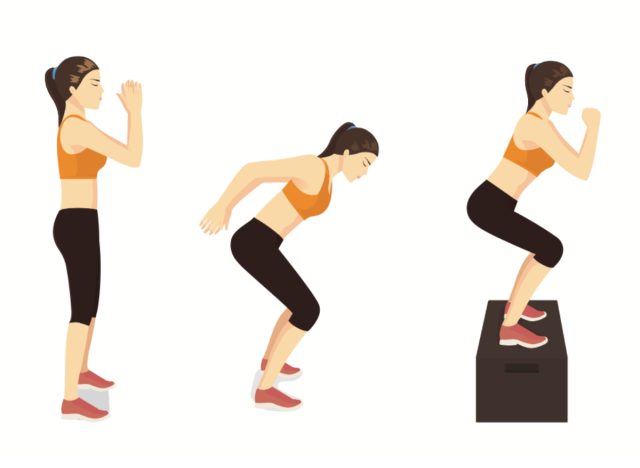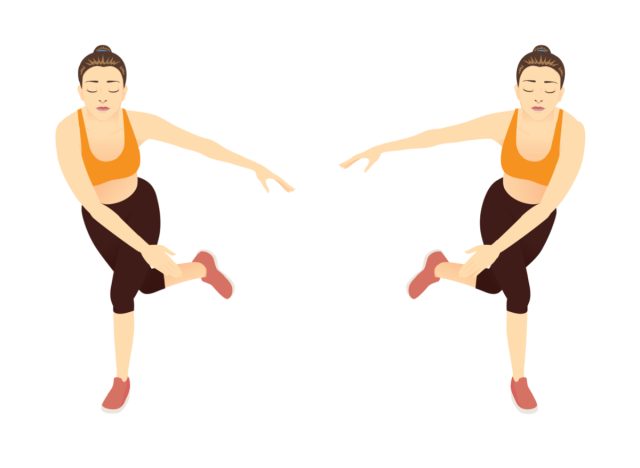To be fast, you have to train fast. To be quick, you have to train quickly. To become powerful, you have to train powerfully! If you’re looking to elevate your agility game. As a certified sports performance coach, I’ve crafted my top 10 best exercises to improve your agility and take your athleticism to the next level. I’ve worked with athletes and clients of all fitness levels, from weekend warriors to professional athletes. These progressive exercises focus on building a strong movement base to increase the intensity and power of your workouts.
Agility isn’t just about speed; it’s the fusion of quickness, balance, coordination, and explosiveness. This list covers a spectrum of dynamic movements designed to sharpen your plyometric skills, boost your lateral movement, and fine-tune your body’s ability to adapt to any situation swiftly.
Whether you’re an athlete seeking to dominate, a fitness enthusiast looking to spice up your routine, or someone simply striving for sharper movement skills in daily life, these exercises are your ticket to mastering agility. From plyometrics to sprints, each exercise offers a unique challenge that promises to unlock your full potential and elevate your performance to new heights.
Keep reading for my 10 best exercises to improve agility. And when you’re finished, don’t miss Here’s How Long You Need To Walk Every Day for Weight Loss.
Pogo Jumps
The first of these exercises to improve agility is the pogo jump. Pogos set the stage for developing plyometric power to improve agility. You can perform them as intensive (height) or extensive (distance) pogos to prep your body for handling the eccentric demands of plyometrics and power or agility training. Variations include two-foot vertical, two-foot line hops, in-and-outs, front-to-backs, two feet forward for distance, or two-foot lateral for distance.
Stand with your feet shoulder-width apart, knees slightly bent, and engage your core. Push off the balls of your feet, jumping vertically while swinging your arms upward for momentum. Aim for minimal ground contact, maintaining a quick, continuous rhythm. Land softly, absorbing impact with your legs, and immediately spring back up.
Complete three sets of 10 contacts per set, or 10 yards for distance, with 60 seconds of rest between sets.
Power Skips
Power skips improve agility by enhancing explosive strength, coordination, and balance. The movement involves driving the knee upward while propelling the body upward and forward in a skipping motion, improving linear speed, power, and agility. Power skips are excellent for all fitness levels to progress plyometric capabilities, which are crucial for quick direction changes and rapid movements, common aspects of agility-based activities.
Start by standing tall with your feet hip-width apart, and go into a light jog for a short distance. Next, explosively lift one knee toward your chest while driving the opposite arm upward, then push off forcefully from the ground with the other foot. Leap upward and forward, switching legs mid-air and landing softly on the balls of your feet. Alternate legs with each skip, and focus on achieving maximum height and distance with each jump while maintaining proper form.
Perform three sets of three to six reps per side with 120 seconds of rest between sets.
Lateral Skips
After conquering linear power skips, lateral skips are the next step in your agility progression. The same principles apply here: quick and explosive movements as you aim to move your body quickly from side to side. I recommend warming up with a few lateral marches to hone your mechanics and refine your timing. They’re tricky!
Start by standing tall with your feet hip-width apart and soft knees. Next, explosively lift your left knee toward your chest while driving the right arm upward. Then, push off forcefully from the ground with the left foot, pushing your body laterally to the right and driving your right knee up toward your chest.
Repeat this sequence for the number of reps or distance, then perform on the other side, driving laterally with your right leg. Focus on achieving maximum height and distance with each jump while maintaining proper form. Complete three sets of 5 to 8 reps per side with 90 seconds of rest between sets.
Coach note: You’ll be explosively driving only one leg through the ground as you move laterally. The opposite leg will be trained when heading in the other direction.
Box Jumps

Box jumps are excellent for developing power and explosiveness. They harness the effects of your muscle’s stretch-shortening cycle to build elasticity and make you springy! The key is aggressively pushing the ground away with your legs as you jump. Note that you aim to land with your legs slightly bent. Focus on the height of your jump, not the height of the box you are jumping on.
Stand about a foot away from a plyometric box (or bench) with your arms overhead. Perform a quick quarter squat while swinging your arms down for momentum. Explode up while swinging your arms, and land softly in a quarter squat on top of the box or bench. Step down, and repeat as needed.
Perform three sets of three to five jumps per set with 90 seconds of rest between sets.
Broad Jumps
Broad jumps train explosiveness in a horizontal direction, relying on powerful hip extension. Where box jumps allow you to be powerful when driving up, broad jumps develop power as you drive out. This begins to introduce building explosive power in other planes of motion compared to the traditional vertical emphasis.
Stand tall with your arms straight overhead. Swing your arms down fast as you enter a quarter squat. Explode out, driving your body forward. Land softly and balanced with your feet under your hips in a high squat.
Perform three sets of three to five jumps per set with 90 seconds of rest between sets.
Skater Jumps

Skater jumps target power and agility in lateral movements, aiding in exercises like lateral shuffles and quick changes of direction. These movements are crucial for sports that require rapid adjustments and agile footwork, enhancing your ability to move swiftly and responsively during dynamic activities.
Start by standing upright with your feet hip-width apart. Cross your right leg behind you as you balance on your left foot. Next, explosively jump laterally to the right by pushing off your left foot. Land softly on both feet, and repeat for the other side, alternating jumps.
Complete three sets of three to six jumps per foot with 90 seconds of rest between sets.
Hurdle Hops
Next up on this roundup of exercises to improve agility is the hurdle hop. Hurdle hops combine vertical and horizontal explosiveness, or if performed as lateral hurdle hops, harness vertical and lateral power. You can easily progress these by introducing higher hurdles, increasing the number of jumps, or performing single-leg variations if you’re pretty advanced. Aim to be explosive and quick off the ground, jumping into the next rep—literally.
Start by standing with your feet hip-width apart, then explosively jump over each hurdle in a continuous motion. Tuck your knees toward your chest while in mid-air to clear the hurdle, landing softly on the other side. Quickly rebound off the floor to explode into the next jump, or come to a dead-stop for a perfect set-up if you’re newer to hurdle hops.
Line five to 10 hurdles (low hurdles, not track hurdles) in a row. Perform three sets of five to 10 jumps with 90 seconds of rest between sets.
Lateral Shuffle
Lateral shuffles will improve your side-to-side (lateral) speed and agility. They’ll also improve how quickly you can change direction and help boost your ability to make cuts when sprinting or playing sports. Start by training your lateral shuffle in one direction. Then, add one to two direction changes within your sequence to amplify the intensity. Stay low, be quick, and PUSH!
Start by setting up cones for the distance you plan to shuffle or to give yourself a starting point if going for reps. Place your feet shoulder-width apart, keeping your knees bent. Shift your weight to one foot and step laterally, then follow with the other foot. Stay low with your hips back, your chest up, and your hands ready. Shuffle laterally with quick, controlled steps. Repeat for desired repetitions, time, or distance, focusing on agility and balance.
Complete three sets of three to six lateral shuffles per set. Focus on staying low, pushing with your legs, and keeping the intent of the movement as quick as possible. Rest for 90 seconds between sets.
Shuffle to Sprint
Shuffle to sprint is one of the best exercises to improve your agility. This movement combines the agility and balance of quick lateral steps with the speed and power of sprints. Ensure you are properly warmed up, as this exercise can quickly intensify. To progress this exercise, modify the distance or reps of the lateral shuffle, increase the distance of the sprint, or add multiple changes of direction.
Start by setting up three cones. The distance from cone 1 to cone 2 should be five yards. The distance from cone 2 to cone 3 can be 10 to 15 yards apart. Start in an athletic position, and quickly shuffle from cone 1 to cone 2. Flip your hips, stay low, and accelerate into a sprint from cone 2 to cone 3.
Rest for 90 seconds between reps, and face the opposite direction to complete the next rep. Perform three sets of one rep per side in total.
Shuttle Sprints
This list of the best exercises to improve agility wraps up with the shuttle sprint. Shuttle sprints improve speed and power, change of direction, and agility. The key here is to be as fast as possible from point A to point B, stay low, and quickly get in and out of your cuts. You can intensify this exercise by increasing the distance between your cones or the number of directional changes you perform (number of down and backs).
Place your two cones at your desired distance. I recommend five to 10 yards apart. Begin in a sprint start stance, quickly sprint to the first marker, maintaining a low center of gravity, and touch the ground with both hands upon reaching it. Quickly reverse direction with a fast and low change of direction, sprint back to the starting point, and repeat the process.
Complete three to five sets of sprints with two to four changes of direction per rep. Rest for 120 seconds between sets.











